My fractured image is complete but before I show it to you, take a look at the original floral design:
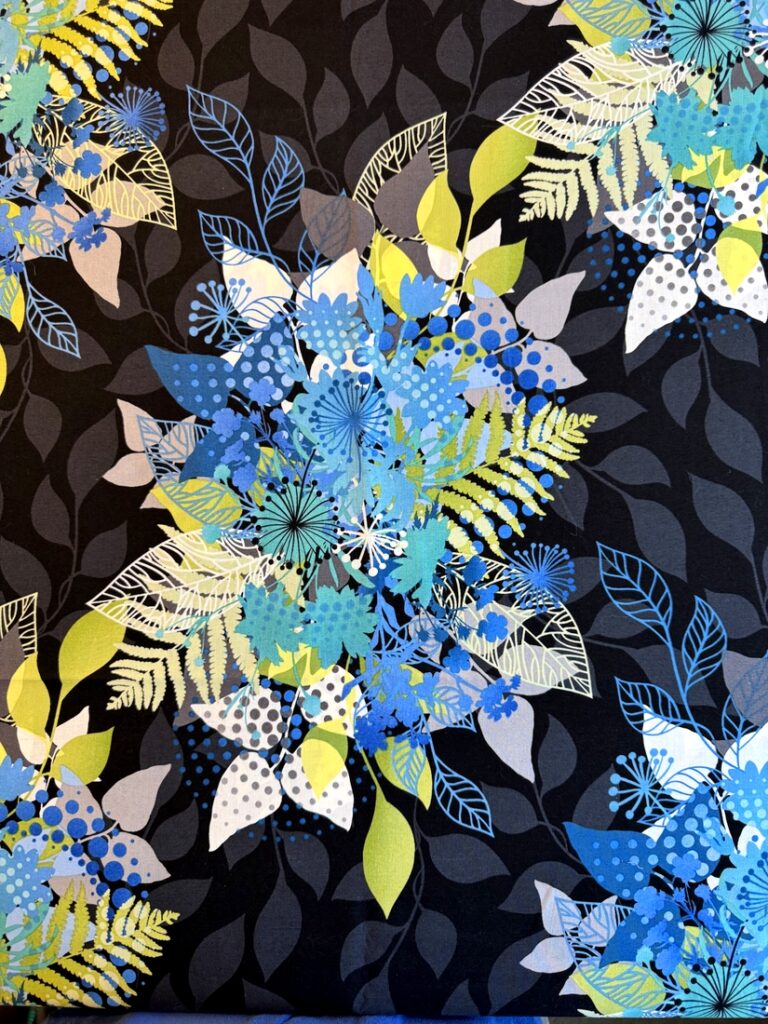 Isn’t that gorgeous? It’s the focus fabric from Jason Yenter’s “Unusual Garden” line for In the Beginning Fabrics dating back to 2017.
Isn’t that gorgeous? It’s the focus fabric from Jason Yenter’s “Unusual Garden” line for In the Beginning Fabrics dating back to 2017.
Now look at my fractured image:
You’re getting the full ripples-in-a-pond effect that fracturing an image creates.
As I was looking at this on my design wall, I wondered what it would look like turned on its side:
Wow! I really like the look of that. Most floral designs have a definite top and bottom but Jason Yenter’s design is more versatile than that. Maybe that’s why he named it “Unusual Garden.”
Just for fun, I gave my image another quarter turn:
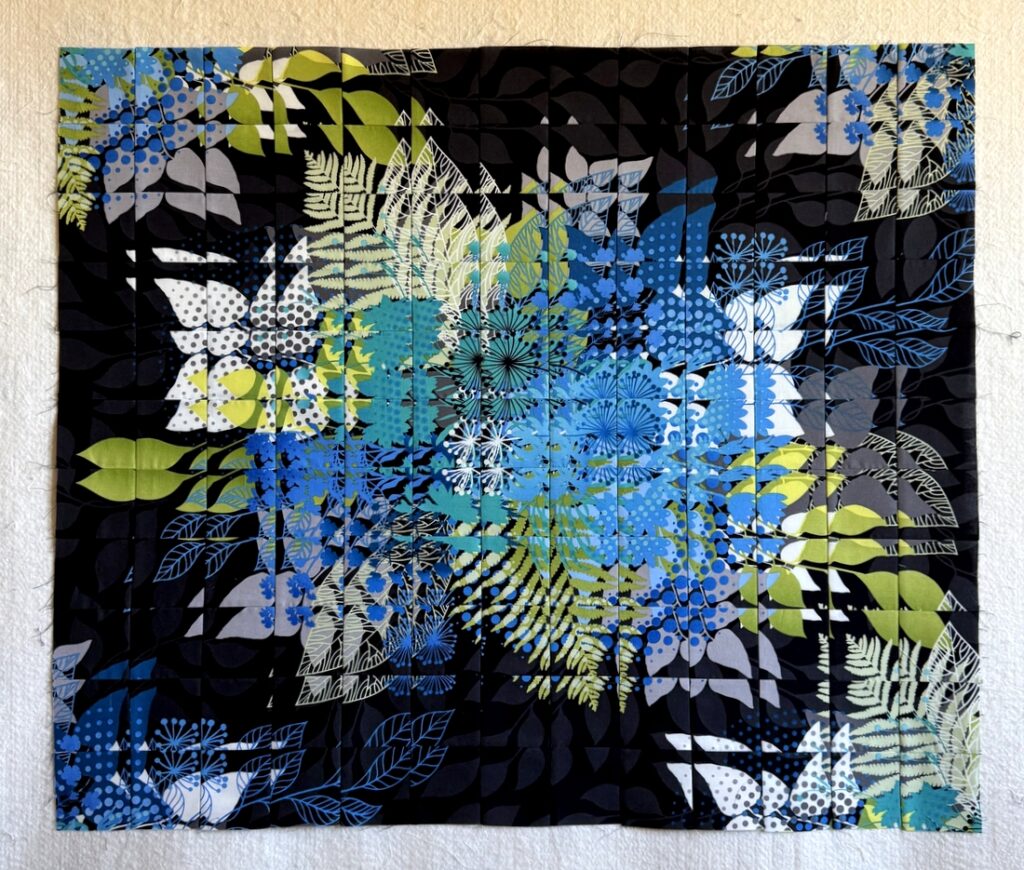
I must say I like them all, even though I do have a favorite. (Do you?) Since this is going to be a wall hanging, I don’t really have to choose, do I? I could hang it any one of four ways. As my twin sister Diane (visiting from Georgia) pointed out, “You can’t lose!”
Following the lead of my friend Lynn, who fractured the very same image, I’m going to add a very narrow flange of mossy green and finish it with a narrow solid black border. Since this is so small I’ll quilt it myself. The next big decisions are what color thread to use and what quilt design to employ. Stay tuned!

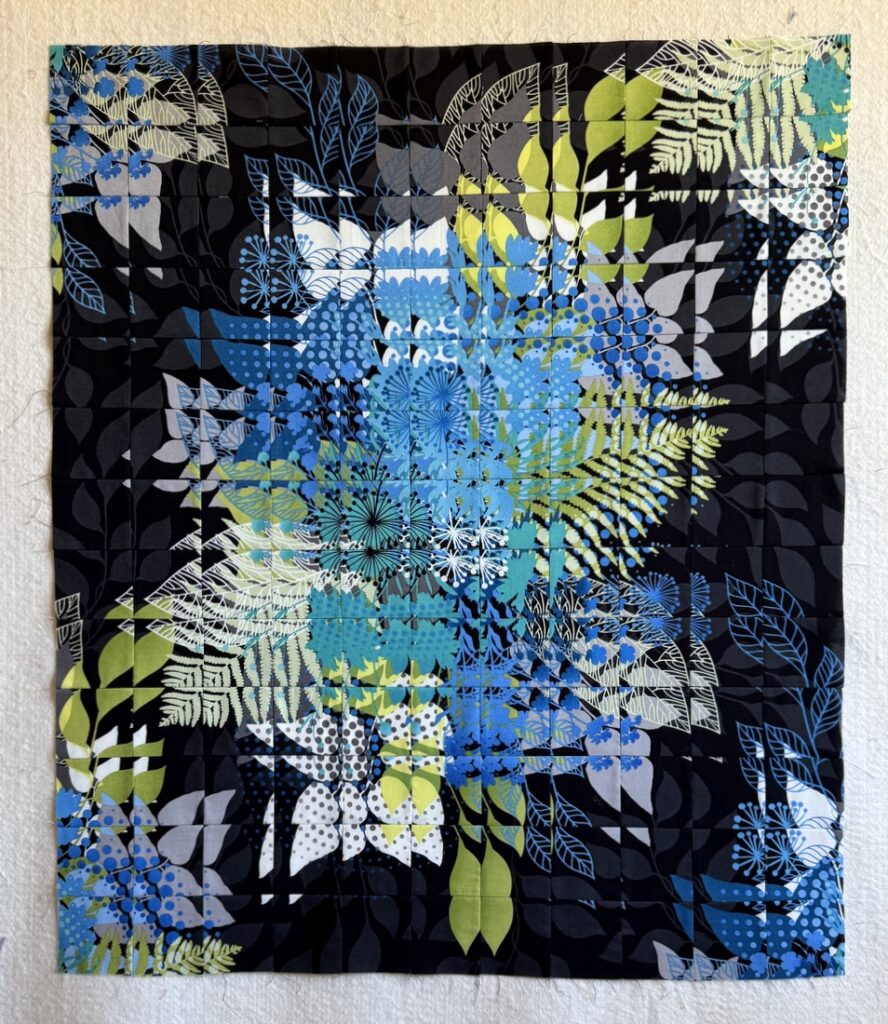
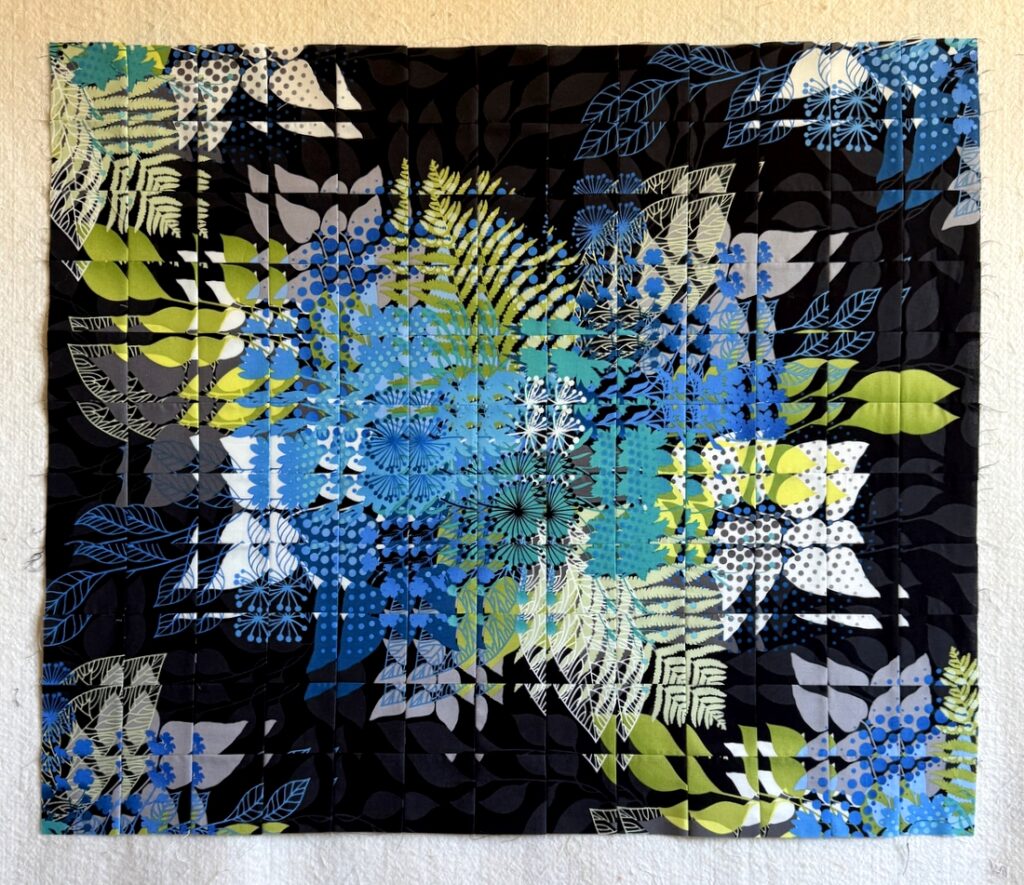
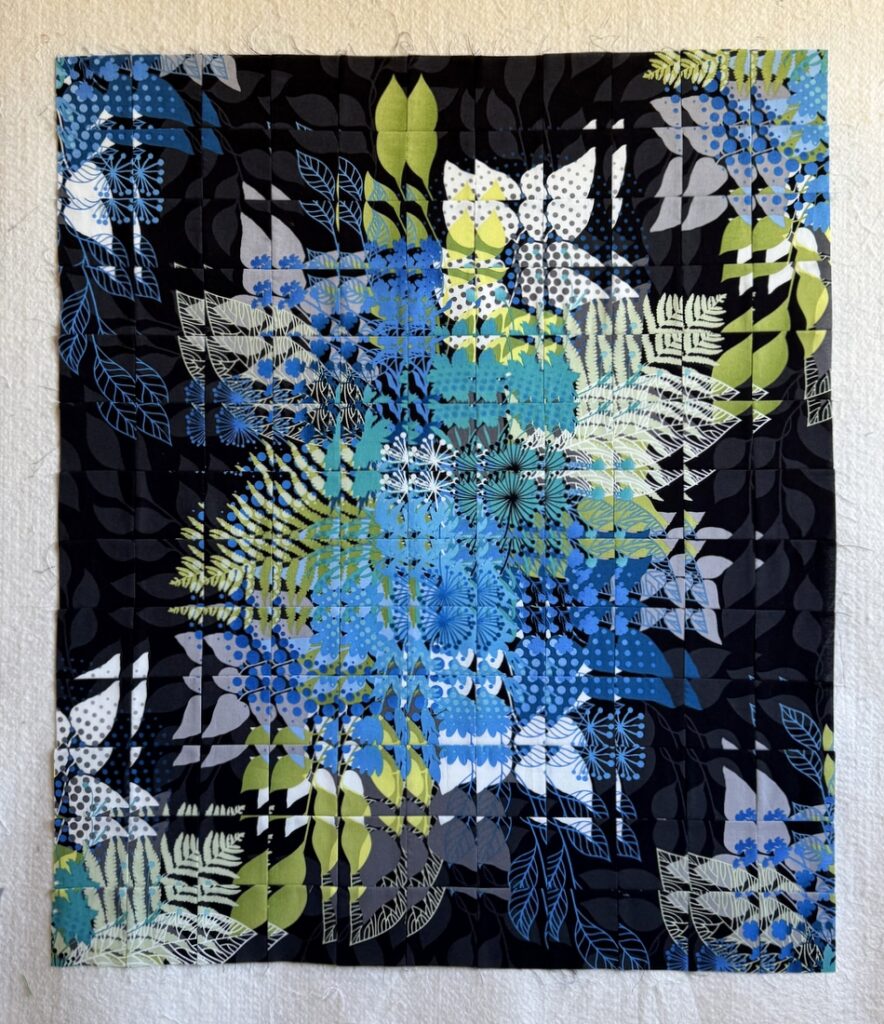
Wow! Just beautiful colors. I’d love to see a video of the progression! Next time.
Stunning no matter which way it’s turned! What amount of yardage is needed to create something like this?
Hi, Cindy. It all depends on how the image you want to fracture is arranged on the fabric. The safest bet is to count a minimum of four repeats of the image on the lengthwise edge of the fabric. You may think you can use images across the width of the fabric but in most cases there are subtle differences that only become apparent after you have cut the squares and arranged them to produce the fractured image, which of course won’t look right. (No need to ask how I know this!)
One way to test if you can use an image in a different part of the width of fabric is to place a piece of template plastic slightly larger than the image you want to fracture on one image close to a selvedge and outline some of the design elements (the tip of a leaf, for instance, or the curve of a petal). Then move the plastic to another image adjacent to the first one to see if the registration marks line up. Hope this helps!
Beautiful, and a lot of work!
This is a very cool piece, Dawn – love it!
Fractured images are so versatile that it turns out, in your current wall hanging project, to be four distinct “artworks” that can be rotated in an instant with a clever a mounting system. This project also illustrates the infinite possibilities of a little fabric and a big imagination! Well done, Nubs.